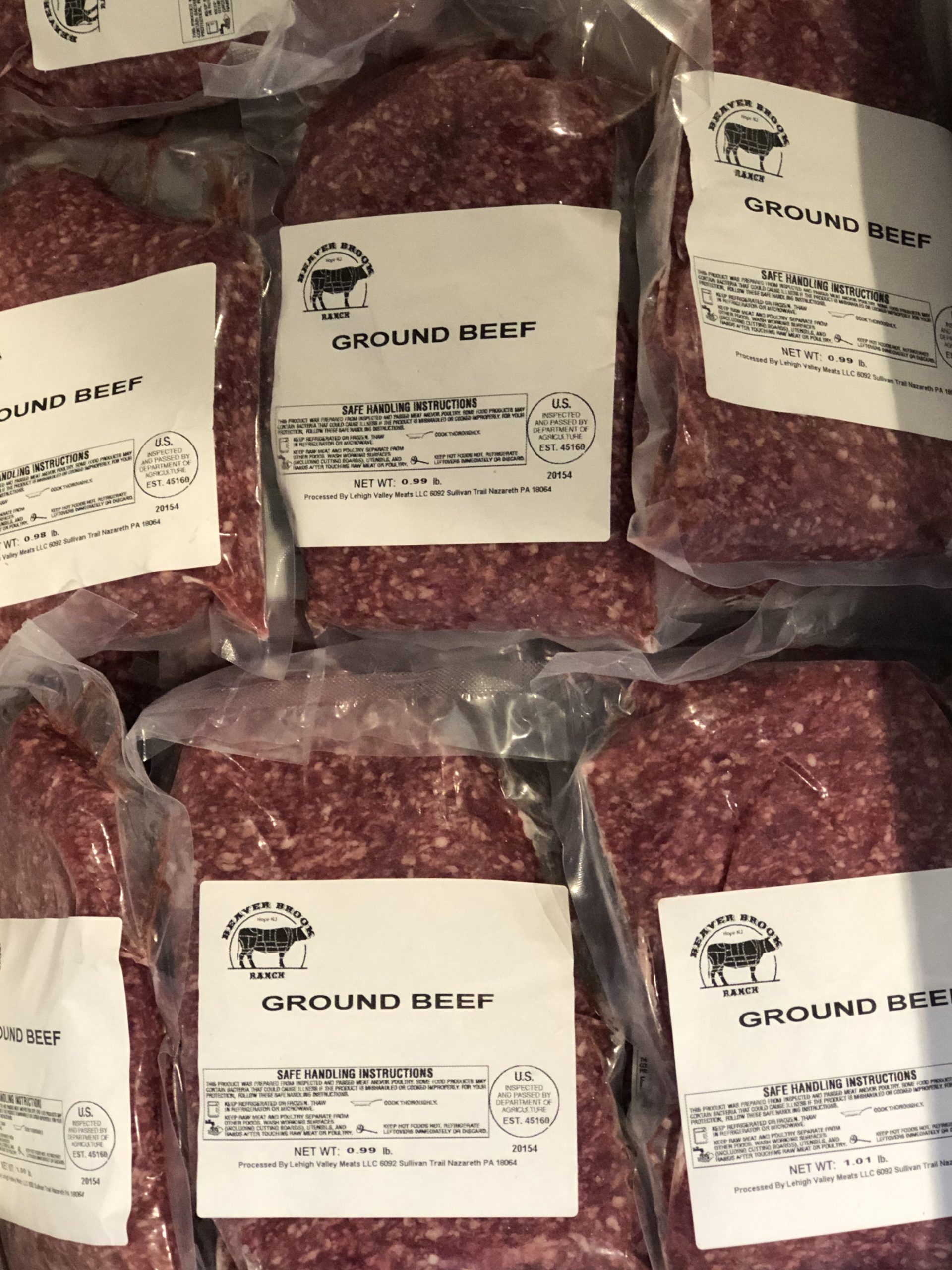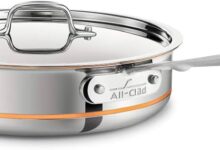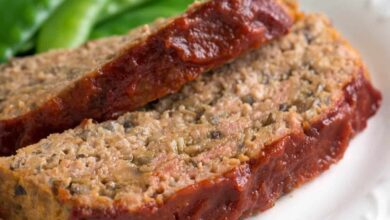Air in Vacuum Sealed Meat: Uncovering the Surprising Truth

Vacuum sealed meat eliminates air to maintain freshness and extend shelf life. Vacuum sealing meat is a popular method used to preserve its quality, as it eliminates any air from the packaging.
This process helps to prevent the growth of bacteria, mold, and other microorganisms that thrive in the presence of oxygen. By removing the air, vacuum sealing protects the meat from freezer burn, oxidation, and moisture loss. As a result, vacuum sealed meat stays fresh for longer periods, without compromising taste or texture.
Whether you’re storing raw or cooked meat, vacuum sealing is a reliable technique for keeping it safe and appetizing. Let’s explore the benefits of vacuum sealing meat and learn why it has become a preferred choice for many households and businesses in preserving their meat products.
The Science Behind Vacuum Sealing And Its Impact On Meat Freshness
The process of vacuum sealing meat involves removing all air from the packaging, creating a sealed environment that prevents spoilage and extends the freshness of the product. Vacuum sealing is widely used in the food industry due to its preservation benefits. When meat is exposed to oxygen, it undergoes oxidation, resulting in color and flavor changes, as well as the growth of bacteria and other microorganisms. By removing the air and oxygen, vacuum sealing significantly reduces the risk of spoilage and bacterial growth, thereby extending the shelf life of the meat. Additionally, the absence of oxygen prevents the oxidation process, preserving the natural color and flavor of the meat. In conclusion, vacuum sealing is a science-backed method that helps maintain meat freshness by eliminating air and oxygen, preventing spoilage and preserving the quality of the product.
The Surprising Truth: Air Presence In Vacuum Sealed Meat
It may come as a surprise to many, but the presence of air in vacuum-sealed meat is more common than one might think. Several factors can contribute to this occurrence, and it is essential to understand the potential risks that air exposure poses.
One of the primary culprits behind air presence in vacuum-sealed meat is improper packaging. If not done correctly, there may be small gaps or leaks in the packaging material, allowing air to seep in over time. Additionally, during the vacuum sealing process itself, some air may remain trapped within the packaging.
Another factor to consider is the quality of the meat itself. If the meat is not properly trimmed and excess fat or connective tissue is left behind, air pockets can form within the packaging. Similarly, age and quality of the meat also play a role in the presence of air, as meat with a higher moisture content is more prone to releasing gases over time.
Understanding these factors is crucial because air exposure can lead to various risks. Oxygen, in particular, can contribute to the spoilage of the meat, impacting its taste, texture, and overall quality. Additionally, the presence of air increases the likelihood of bacterial growth, potentially leading to foodborne illnesses.
Uncovering The Consequences: Spoilage And Safety Issues
Uncovering the Consequences: Spoilage and Safety Issues The presence of air in vacuum-sealed meat can have significant consequences in terms of spoilage and safety. When meat is exposed to air, it creates an ideal environment for the growth of microorganisms, particularly in aerobic conditions. These microorganisms can multiply rapidly, leading to spoilage and potential health risks. Air contains various microorganisms that can contaminate the meat and promote spoilage. Oxygen, which is abundant in the air, helps these microorganisms thrive and reproduce. As a result, the meat can spoil more quickly, leading to changes in color, texture, and odor. Additionally, the growth of bacteria in the presence of air can also lead to the formation of harmful toxins, further jeopardizing the safety of the meat. To prevent spoilage and ensure safety, it is crucial to remove as much air as possible when vacuum-sealing meat. This can be done by using proper vacuum-sealing techniques and ensuring a tight seal to minimize air exposure. By understanding the effects of air on meat spoilage, we can take the necessary precautions to maintain the quality and safety of vacuum-sealed meat products.
Preventive Measures: Minimizing Air In Vacuum Sealed Meat
Preventive Measures: Minimizing Air in Vacuum Sealed Meat
Strategies for reducing air exposure during packaging:
- Ensure the meat is properly trimmed and free from excess fat before vacuum sealing.
- Use high-quality vacuum seal bags or pouches with a reliable seal to prevent air leakage.
- Remove as much air as possible from the bag before sealing by using a vacuum sealer machine.
- Consider adding an oxygen absorber packet to the sealed bag to further reduce air exposure.
- Store the vacuum-sealed meat in a cool, dry environment to maintain freshness and minimize oxidation.
Proper handling and storage techniques:
- Always handle the meat with clean hands and sanitize any equipment or surfaces that come into contact with it.
- Store the vacuum-sealed meat in the refrigerator or freezer according to recommended temperature guidelines.
- Use the meat within the recommended time frame to minimize the risk of spoilage.
Alternative packaging methods to consider:
- Consider using modified atmosphere packaging (MAP) techniques that involve replacing the air in the packaging with a specific gas mixture to extend the shelf life of the meat.
- Explore options like vacuum skin packaging (VSP) or vacuum pouches with a gas flush feature to create a tight barrier against air and potential contaminants.
Ensuring Optimal Quality: Best Practices For Vacuum Sealed Meat
Vacuum sealing is an effective method for preserving meat and maintaining its freshness for an extended period. To ensure the best quality of vacuum sealed meat, it is essential to follow a few tips for effective sealing:
- Choose the right packaging materials: Opt for high-quality vacuum sealing bags or rolls that are specifically designed for food preservation. Make sure they are durable and free from any leaks or punctures.
- Properly prepare the meat: Remove excess moisture, trim fat, and portion the meat into appropriate serving sizes before vacuum sealing. This will help preserve its texture and prevent freezer burn.
- Ensure a tight seal: Before sealing the bag, ensure that all air is removed by using a vacuum sealer machine. This will help prevent any possible oxidation and maintain the meat’s taste and flavor.
In addition to effective vacuum sealing techniques, proper storage is crucial for maintaining the freshness of vacuum sealed meat:
- Temperature control: Store vacuum sealed meat at a consistent temperature of 0°F (-18°C) or below. This will prevent bacterial growth and maintain the quality of the meat.
- Freezer organization: Properly label and organize vacuum sealed meat in the freezer to easily identify and use it before its expiration date. Place the oldest packages at the front for easier rotation.
By following these best practices for vacuum sealing and storage, you can ensure that your vacuum sealed meat retains its optimal quality and stays fresh for longer periods.

Credit: www.amazon.com
Expert Insights: Industry Perspectives On Air In Vacuum Sealed Meat
Expert Insights: Industry Perspectives on Air in Vacuum Sealed Meat
Subheading: Interviews with professionals in the food industry
The inclusion of air in vacuum sealed meat has been a widely debated topic in the food industry. Opinions on current practices and advancements have been shared by professionals in the field to shed light on this matter. According to industry experts, the presence of air in vacuum sealed meat can have both positive and negative implications.
On the positive side, air in the packaging can provide a cushioning effect, helping to avoid damage during transit. It also allows the natural colors of the meat to be preserved, enhancing the overall visual appeal.
However, the presence of air can also lead to the oxidation of fats, resulting in rancidity. This can compromise the flavor and quality of the meat. To combat this issue, advancements in technology have led to the introduction of modified atmosphere packaging (MAP), where the air is replaced with a specific concentration of gases to prolong shelf life.
In conclusion, while the inclusion of air in vacuum sealed meat has its advantages, it is crucial for food manufacturers to weigh the potential risks and benefits. The industry continues to evolve, with ongoing research and innovations being carried out to optimize packaging practices and enhance the overall quality of vacuum sealed meat products.
Frequently Asked Questions For Air In Vacuum Sealed Meat
Can Meat Spoil In A Vacuum-sealed Package?
Yes, despite being vacuum-sealed, meat can still spoil. While a lack of oxygen slows down the growth of bacteria, it doesn’t completely stop it. It’s important to note the recommended storage times for different types of meat and ensure proper refrigeration to prevent spoilage.
Why Does Vacuum-sealed Meat Have Air In The Package?
The presence of air in vacuum-sealed meat packages is often due to a natural occurrence called off-gassing. As meat ages, it releases gases such as carbon dioxide and oxygen, which can create pockets of air within the package. This doesn’t necessarily indicate spoilage, as long as the seal remains intact.
Is It Safe To Consume Vacuum-sealed Meat With Air Bubbles?
In general, small air bubbles within vacuum-sealed meat packages are not a cause for concern. However, if the package has a substantial amount of air or shows signs of a compromised seal, it’s best to err on the side of caution and discard the meat.
Always trust your senses and look for any abnormal odors or visual changes before consuming.
How Can I Prevent Air Bubbles In Vacuum-sealed Meat?
To minimize the formation of air bubbles in vacuum-sealed meat, proper packaging is crucial. Make sure to remove any excess air before sealing the package, using a vacuum sealer if available. Additionally, handling the meat gently and avoiding sharp objects that could puncture the packaging can help maintain the integrity of the seal.
Conclusion
To wrap up, eliminating air from vacuum-sealed meat is crucial for several reasons. By removing oxygen, we prevent the growth of harmful bacteria and extend the shelf life of the product. Additionally, vacuum sealing preserves the meat’s freshness, texture, and flavor, ensuring a high-quality experience for consumers.
So, next time when you’re storing meat, remember the importance of airtight packaging. It’s a small step that can make a big difference.








